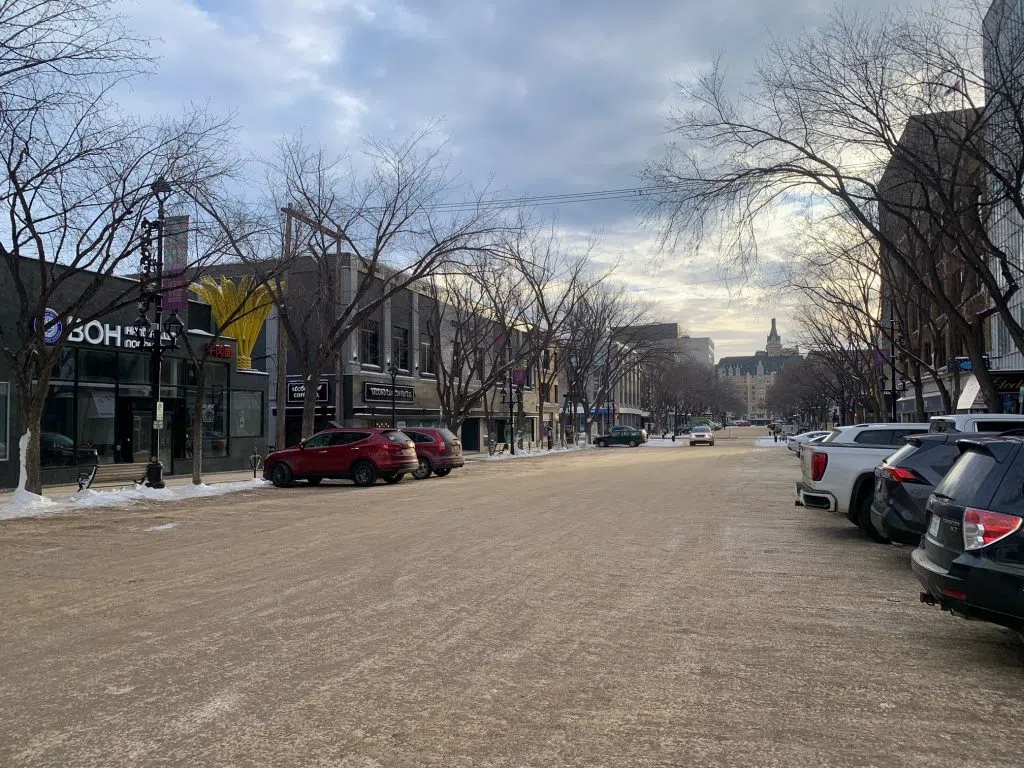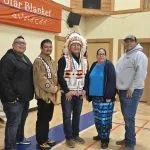
Saskatoon advocates make desperate plea for action
February’s deadly cold snap has broken.
Over the weekend temperatures are expected to reach single digits but this brings little relief to those living outside.
The complicated issue is taking its toll on everyone especially on community advocates like David Fineday and Chris Moyah who recently hosted a smudge walk in Saskatoon.
EFN sat down with Fineday a few days after he learned of the 19-year-old woman who was found dead in a Saskatoon field on Feb. 3rd. The Saskatoon Tribal Council said there are no records of the teenager ever staying at their Emergency Wellness Centre.
Fineday sat in the Boxcar Cafe in Station 20 West and wondered out loud what more he could do to help his community.
He definitely wants answers.
Fineday is not only looking for accountability, but for ways to bring more awareness to the often tragic experiences of the homeless.
“They have millions of dollars just sitting there,” said Fineday. “That’s what’s killing these people, this money just sitting there.”
A few minutes later, his cell phone rings.
Fineday says, he gets a lot of calls from people letting him know what’s going on in the community.
The phone call was short.
“We lost another one,” said Fineday. “A 96-year-old man. I don’t know any other details, but this can’t keep happening.”
A Voice for the Houseless
Fineday, a member of the Sweetgrass First Nation, has been very vocal about Saskatoon’s houselessness issue. He frequently appears in local news stories and has appealed to city councils and governments for action.
The names and cause of death for the 19-year-old girl and the elderly man who were both found in the Fairhaven neighbourhood have not been released.
According to several online weather sites, temperatures dipped to below minus 30C the week the deaths occurred.
“I prayed and smudged for six days and this is still what happens,” said Fineday. “There’s 1500 to 2000 people out there. They need this money today, not tomorrow.”
He referred to the City of Saskatoon’s Community Encampment Response Plan, which includes a federally funded capital project valued at more than $4.4 million.
A recent point-in-time count from the City of Saskatoon identified 1,499 people in the city experiencing houselessness.
Fineday believes the number is much higher.
“A lot of people don’t want to admit they’re homeless,” he said. “They’re couch surfing or staying with a family member. They don’t want people to see them as homeless, so they’re not participating in these counts.”
Fineday has lost several close people in the last year to pneumonia, freezing temperatures, and chronic illness. All consequences of homelessness, and all avoidable, he said.
In November, the City of Saskatoon granted Fineday a 96-hour permit to smudge. He set up an encampment for six days – two more than his permit allowed – where people came to smudge, sleep, pray, have something hot to drink, or talk to a someone who cared.
“I spent four days straight without sleeping,” said Fineday. “People wanted me to stay out there longer, which is why I stayed two extra days. We probably smudged 150-200 people in that time.”
With temperatures going as low as -40C during the week, Fineday believes he saved four or five lives over the six days.
“The smudging was needed,” he said. “We need our spirituality brought back. That’s what’s missing with 99 per cent of these people. It was like family there. We’re able to talk and be there for each other. That turns lives around.”


